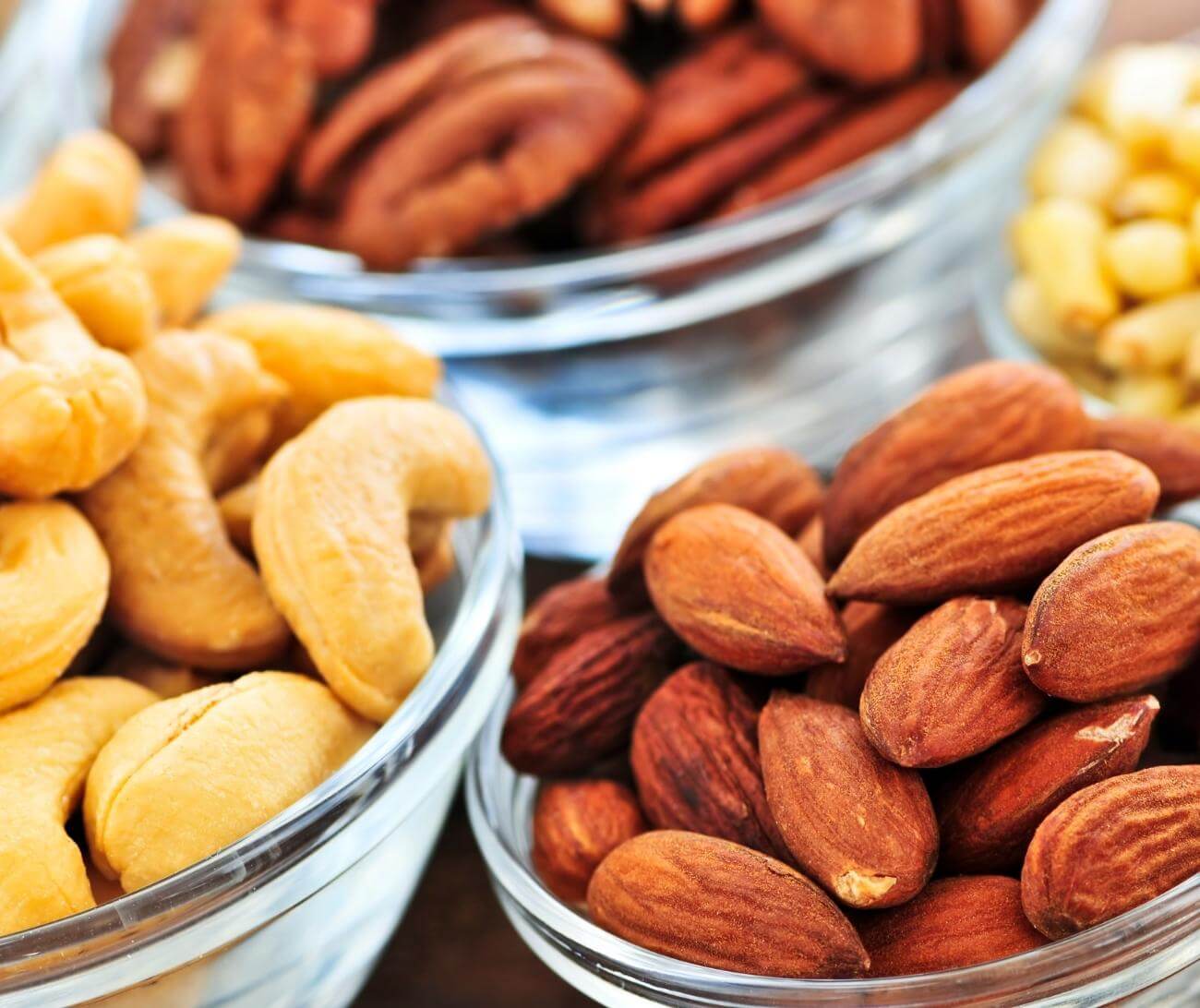Key Takeaways:
- If your blood sugar is on a constant rollercoaster of highs and lows, it can leave you exhausted, moody, and hungry throughout the day.
- The good news: You can stabilize your blood glucose with a few simple lifestyle changes.
Have you ever experienced a sugar crash?
Maybe you eat a big dessert or drink a soda with lunch. Your blood glucose spikes (hyperglycemia), and you feel great for about half an hour—lots of energy, a positive mood, and so on.
But before long, that sugar high runs out. Brain fog makes it hard to focus. Your energy takes a dip. You’re irritable and moody. Maybe you’re hit with food cravings even though you just ate.
Sound familiar? If you’ve ever crashed after eating sugar or refined carbs, you know what it’s like to have unstable blood sugar levels.
Your blood glucose affects your:
- Brain function
- Mental focus
- Energy level
- Mood
- Hunger and food cravings
- Longevity
- Risk of disease
When you’re in good shape, your body can deal with the occasional spike in blood glucose. But if your blood sugar is on a constant rollercoaster of highs and lows—due to your diet, age, genetics, and other factors—fluctuations can leave you exhausted, moody, and hungry throughout the day.
The good news is that you can stabilize your blood glucose with a few simple lifestyle changes. In this article, you’ll learn about the benefits of stable blood glucose and simple ways to keep it steady throughout the day.
4 Benefits of Stable Glucose

You usually hear about blood glucose in the context of diabetes.
But even if you don’t have diabetes, stabilizing your blood sugar is a powerful way to live longer, improve your mood and energy levels, and lose body weight faster.
Here are four major benefits that come from keeping your blood sugar stable.
1. Stable Energy
Refined carbohydrates break down very easily in your body. They’re already so close to glucose that you barely need to digest them.
Refined carbohydrates rush through the digestive process and go straight to the bloodstream, where your cells can grab as much glucose as they need.
However, high blood sugar can be a problem if it lasts too long. When your body detects lots of glucose in your bloodstream, it releases insulin, a hormone that directs sugar out of your blood and into your cells to bring your blood glucose back down within a normal range.
Usually, this process works great. Your blood sugar rises, you release a bit of insulin, and your blood sugar falls back to normal.
But if you feel lethargic after a carb-rich meal, your insulin response may be off─either releasing more insulin than needed or releasing it too late.1
The result is low blood sugar (aka hypoglycemia), which can leave you tired and struggling to stay focused.2
This yo-yo effect demonstrates how blood sugar swings mess with your energy levels. You go from an energy-rich high to an energy-poor low instead of staying in the middle and enjoying stable, continuous energy throughout the day.
You can see this energy crash illustrated in research on blood sugar and diet:
- In a 2017 study, researchers put people on high-glycemic and low-glycemic diets for 28 days. People on high-glycemic diets—diets that cause swings in blood sugar—had significantly more depressive symptoms, mood swings, and fatigue.3
- A 2019 research review found similar results: people experienced fatigue and decreased alertness within an hour of eating refined carbs.4
If you get sleepy and have trouble focusing after meals, consider cutting back on sugar and other high-glycemic foods. Doing so will help stabilize your blood glucose and improve your energy.
2. Sustainable Weight Loss
Your brain contains special cells that sense your blood sugar levels and change your appetite accordingly. If your blood glucose is low, your brain sends signals to make you eat more—but if your blood sugar stays stable, your brain tells your body that you’re full, reducing your hunger levels.5
In other words, swings in blood sugar can make you hungry, making you more likely to overeat.6
On top of that, high-glycemic foods, which disrupt your blood sugar levels the most, are especially rewarding and can elicit strong food cravings.
In a 2013 study, men ate either a low-glycemic or high-glycemic meal. The men who ate the high-glycemic meal had low blood sugar several hours afterward and reported significantly more food cravings.7
Another interesting finding in this study was that the brain scans of men who ate high-glycemic food showed the reward centers of their brains lit up about an hour after the meal, right when the participants’ cravings kicked in.
Foods that spike your blood glucose are often highly rewarding. They activate the pleasure centers of your brain, which is great during the meal, but once that part of your brain goes dark, you’re left wanting more. That’s why more and more research suggests that high-glycemic foods play a role in food addiction and obesity.7, 8
On the other hand, diets that keep blood sugar stable, like low-glycemic or low-carb diets, actually decrease food cravings.7, 9 Not surprisingly, they also work better for long-term weight loss.10, 11
If you’re trying to lose weight but food cravings keep sabotaging you, prioritize stabilizing blood sugar to reach your fitness goals.
3. Mental Clarity
Blood sugar affects your brain, too. Unstable blood sugar decreases alertness and increases mood swings and depressive symptoms.12, 13
Spikes in blood sugar could also be linked to subtle brain changes.14 A 2015 study found that poor blood sugar control is linked to decreased attention, lapses in memory, and loss of gray matter (a major component of your brain), even in young adults without diabetes.15
More long-term, constant blood sugar swings may be a risk factor for dementia, especially Alzheimer’s. In fact, some researchers call Alzheimer’s “type 3 diabetes” because of the link between unstable blood sugar and brain degeneration.14
For reference, about 35% of Americans have poor blood sugar control without diabetes, and about 84% of people with poor blood sugar control don’t realize that they have it.16, 17
By stabilizing your blood sugar, you can keep your brain strong, both short-term and long-term.
4. Longevity
Stable blood sugar reduces the risk of dementia and keeps the brain healthy well into old age. But that’s not the only way that blood sugar affects longevity.
In some cases, constant blood sugar swings can be a sign of insulin resistance. With insulin resistance, your body becomes less sensitive to insulin signals and misjudges how much insulin you need to stabilize your blood sugar.
Sometimes, you release too much while other times you don’t release enough insulin. As time passes, your ability to stabilize your blood sugar decreases.
Insulin resistance is a strong risk factor for many common age-related diseases linked to mortality, including type 2 diabetes, non-alcoholic fatty liver disease, heart disease and stroke, and obesity.18, 19, 20
Stable blood sugar keeps your body sensitive to insulin and reduces your risk of disease, especially as you get older.21
What Are Some Signs of Unstable Blood Sugar?
Signs of unstable blood sugar may be subtle but can make themselves known through various not-so-fun signs. One big indicator is feeling like you just can't shake off that fatigue, even after a full night's sleep. Your energy levels are on a rollercoaster ride, leaving you drained and sluggish.
Sneaky cravings that pop up out of nowhere, pushing you towards sugary snacks or carb-loaded treats. These cravings are your body's way of signaling that it needs a quick fix of glucose. Feeling jittery or shaky an hour or two after a high-carb meal can also be a sign, almost like you’ve had too many cups of coffee. Unstable blood sugar levels can also affect your mood, causing irritability and mood swings.
10 Ways to Reach Stable Blood Sugar Levels
There are several ways you can work to reach more stable blood sugar levels, and most are simple changes that you can start today.
1. Choose High-Fiber Carbs
Forget the message that all carbs are bad, and instead, recognize that not all carbohydrates are created equal. The key is to choose high-fiber carbohydrates because fiber helps slow down glucose absorption into your blood to prevent blood sugar spikes.
Whole grains, non-starchy vegetables, fruits, and legumes are excellent sources of fiber and should make up most of your carbohydrate intake.
2. Exercise
Regular exercise helps your muscles use glucose more efficiently, which can lower your blood sugar levels and reduce insulin resistance. Even a short walk after meals can help your cells become more insulin-sensitive.22
Find an activity you enjoy and make it a regular part of your routine. Aim for at least 30 minutes of moderate to vigorous physical activity daily.
3. Get Enough Sleep
Lack of sleep can throw off the body's natural circadian rhythms, which impact blood sugar levels. Aim for 7-9 hours of quality sleep each night to promote stable blood sugar levels.
If you struggle with getting enough sleep, check your sleep hygiene to make sure you’re limiting screen time, dimming the lights, blocking out sound, and choosing relaxing activities to help your body rest.
4. Reduce Alcohol Consumption
Alcohol interrupts sleep and lowers inhibitions, which may make it more likely you’ll reach for foods you don’t actually need. Some mixed drinks are also full of sugar that spike blood glucose (and disrupt sleep patterns).
Recent studies suggest there is no safe level of alcohol, but if you do drink, the CDC recommends sticking to no more than two drinks daily for men and one drink for women.
5. Manage Stress
Stress triggers the release of stress hormones like cortisol that increase blood sugar levels. Research suggests that psychological stress is closely tied to blood sugar dysregulation.24
Find healthy outlets for managing stress, such as meditation, yoga, deep breathing exercises, or talking to a therapist. Making time for self-care can help reduce stress and improve overall health.
6. Reduce Refined Carb Consumption
Processed and refined carbohydrates, such as white bread, pasta, and sugary cereals and snacks, can cause a rapid rise in blood sugar levels. As you learned earlier, eating these foods might make you feel good temporarily, but the corresponding crash isn’t worth it.
Choose high-fiber carbs like those listed above. These foods are digested more slowly and can help stabilize blood sugar levels.
7. Increase Magnesium Intake
Magnesium is a mineral closely involved with managing blood sugar levels. It helps regulate insulin sensitivity and promotes the production of energy from glucose. Studies show that people with low magnesium intake may be at more risk for blood sugar dysregulation.25
Magnesium-rich foods include leafy greens, nuts, seeds, and whole grains.
8. Try Apple Cider Vinegar
Apple cider vinegar (ACV) has been shown to improve insulin sensitivity and lower blood sugar levels.26
You can incorporate ACV into your diet by using it as a salad dressing or diluting it with water and drinking it before meals.
9. Pair Carbs With Protein or Healthy Fat
Eating carbohydrates alone can cause a rapid rise in blood sugar levels. Pairing carbohydrates with protein or healthy fats slows digestion and helps stabilize blood sugar levels.
Easy examples include apple slices with almond butter, whole grain toast with avocado and eggs, or Greek yogurt with berries and nuts.
10. Monitor Blood Sugar Levels
Observing your body's response to food and exercise is the only way to really understand how it responds to these changes. Regularly monitoring your blood sugar levels can help you identify patterns and make necessary adjustments to your diet and lifestyle.
<p class="pro-tip"><strong>Also Read: </strong><a href=how-to-break-a-fast>How to Break a Fast Safely: Managing Blood Sugar Levels</a>.</p>
Keeping Track of Your Glucose Levels

Regular exercise, a low-glycemic diet, and building metabolic flexibility can all help you keep your blood sugar stable throughout the day.
That said, stable blood glucose depends on a variety of factors, including diet, activity level, genetics, age, and more. One of the best ways to find what works for you is to use a continuous glucose monitor. A glucose monitor lets you track your blood glucose after different types of meals, workouts, a good night’s sleep, and more.
Over time, you can use that data to create a lifestyle that fits your unique biology and keeps you performing your best.
Frequently Asked Questions
What Is a Stable Blood Glucose Level (For Non-diabetics)?
If you don’t have diabetes, a healthy blood sugar level is between 70 and 100 mg/dL when fasting and below 140 mg/dL after a meal.
How Do You Keep Glucose Stable Overnight?
Your blood sugar changes naturally while you sleep. It increases between 3 am and 8 am as part of the process that helps your body wake up. However, if you’re having trouble regulating your blood sugar, your levels may rise too much or too quickly, waking you up in the middle of the night.
If you feel hungry before bed, try a low-glycemic snack:
- Nuts
- Cheese
- Hardboiled egg
- Avocado
- Peanut butter (no added sugar)
- Vegetables with hummus
- Plain Greek yogurt
What’s the Role of Protein in Blood Sugar Regulation?
Protein has minimal effect on blood sugar. Eating a high-protein diet that’s low in refined carbs is a great way to improve blood sugar control and lose weight. High-protein diets are very effective for long-term, sustainable fat loss.27
What’s the Role of Fat in Blood Sugar Regulation?
Older research shows that, in the context of a healthy diet, eating fat has minimal effect on blood sugar.28
However, diets high in fat and refined carbs often lead to weight gain, and excess weight contributes to poor blood sugar control.29
If you eat too many calories and get your fat from foods like pizza, pasta, baked goods, ice cream, and other foods high in refined carbs, you’re likely to have issues with blood sugar control.
But by eating fat in the context of a healthy, low-glycemic diet—for example, a steak with roasted vegetables, sweet potato, and olive oil—you’re much less likely to have issues controlling your blood sugar.
Final Thoughts
Stabilizing your blood glucose is a great way to improve your mental and physical performance, lose weight, and age better.
You can stabilize your blood sugar through simple lifestyle changes like consistent exercise or healthy eating on a low-glycemic diet.
Consider trying a continuous glucose monitor for personalized insight into how you can control your glucose. It will give you real-time feedback on how your lifestyle affects your blood sugar levels. With that data, you can create a lifestyle that helps you become a stronger, better, healthier you.
<p class="pro-tip"><strong>Learn More: </strong><a href=hot-flashes-and-blood-sugar>Can Blood Sugar Impact Hot Flashes?</a>.</p>
- Item 1
- Item 2
- item 3
Topics discussed in this article:
References
- Altuntaş Y. (2019). Postprandial Reactive Hypoglycemia. Sisli Etfal Hastanesi tip bulteni, 53(3), 215–220. https://doi.org/10.14744/SEMB.2019.59455
- Brun, J. F., Fedou, C., & Mercier, J. (2000). Postprandial reactive hypoglycemia. Diabetes & metabolism, 26(5), 337–351.
- Breymeyer, K. L., Lampe, J. W., McGregor, B. A., & Neuhouser, M. L. (2016). Subjective mood and energy levels of healthy weight and overweight/obese healthy adults on high-and low-glycemic load experimental diets. Appetite, 107, 253–259. https://doi.org/10.1016/j.appet.2016.08.008
- Mantantzis, K., Schlaghecken, F., Sünram-Lea, S. I., & Maylor, E. A. (2019). Sugar rush or sugar crash? A meta-analysis of carbohydrate effects on mood. Neuroscience and biobehavioral reviews, 101, 45–67. https://doi.org/10.1016/j.neubiorev.2019.03.016
- Marty, N., Dallaporta, M., & Thorens, B. (2007). Brain glucose sensing, counterregulation, and energy homeostasis. Physiology (Bethesda, Md.), 22, 241–251. https://doi.org/10.1152/physiol.00010.2007
- Melanson, K. J., Westerterp-Plantenga, M. S., Saris, W. H., Smith, F. J., & Campfield, L. A. (1999). Blood glucose patterns and appetite in time-blinded humans: carbohydrate versus fat. The American journal of physiology, 277(2), R337–R345. https://doi.org/10.1152/ajpregu.1999.277.2.R337
- Lennerz, B. S., Alsop, D. C., Holsen, L. M., Stern, E., Rojas, R., Ebbeling, C. B., Goldstein, J. M., & Ludwig, D. S. (2013). Effects of dietary glycemic index on brain regions related to reward and craving in men. The American journal of clinical nutrition, 98(3), 641–647. https://doi.org/10.3945/ajcn.113.064113
- Avena, N. M., Rada, P., & Hoebel, B. G. (2008). Evidence for sugar addiction: behavioral and neurochemical effects of intermittent, excessive sugar intake. Neuroscience and biobehavioral reviews, 32(1), 20–39. https://doi.org/10.1016/j.neubiorev.2007.04.019
- Chang, K. T., Lampe, J. W., Schwarz, Y., Breymeyer, K. L., Noar, K. A., Song, X., & Neuhouser, M. L. (2012). Low glycemic load experimental diet more satiating than high glycemic load diet. Nutrition and cancer, 64(5), 666–673. https://doi.org/10.1080/01635581.2012.676143
- Yancy, W. S., Jr, Olsen, M. K., Guyton, J. R., Bakst, R. P., & Westman, E. C. (2004). A low-carbohydrate, ketogenic diet versus a low-fat diet to treat obesity and hyperlipidemia: a randomized, controlled trial. Annals of internal medicine, 140(10), 769–777. https://doi.org/10.7326/0003-4819-140-10-200405180-00006
- Juanola-Falgarona, M., Salas-Salvadó, J., Ibarrola-Jurado, N., Rabassa-Soler, A., Díaz-López, A., Guasch-Ferré, M., Hernández-Alonso, P., Balanza, R., & Bulló, M. (2014). Effect of the glycemic index of the diet on weight loss, modulation of satiety, inflammation, and other metabolic risk factors: a randomized controlled trial. The American journal of clinical nutrition, 100(1), 27–35. https://doi.org/10.3945/ajcn.113.081216
- Mantantzis, K., Schlaghecken, F., Sünram-Lea, S. I., & Maylor, E. A. (2019). Sugar rush or sugar crash? A meta-analysis of carbohydrate effects on mood. Neuroscience and biobehavioral reviews, 101, 45–67. https://doi.org/10.1016/j.neubiorev.2019.03.016
- Breymeyer, K. L., Lampe, J. W., McGregor, B. A., & Neuhouser, M. L. (2016). Subjective mood and energy levels of healthy weight and overweight/obese healthy adults on high-and low-glycemic load experimental diets. Appetite, 107, 253–259. https://doi.org/10.1016/j.appet.2016.08.008
- Nguyen, T. T., Ta, Q. T. H., Nguyen, T. K. O., Nguyen, T. T. D., & Giau, V. V. (2020). Type 3 Diabetes and Its Role Implications in Alzheimer's Disease. International journal of molecular sciences, 21(9), 3165. https://doi.org/10.3390/ijms21093165
- Weinstein, G., Maillard, P., Himali, J. J., Beiser, A. S., Au, R., Wolf, P. A., Seshadri, S., & DeCarli, C. (2015). Glucose indices are associated with cognitive and structural brain measures in young adults. Neurology, 84(23), 2329–2337. https://doi.org/10.1212/WNL.0000000000001655
- Centers for Disease Control and Prevention. (n.d.). National Diabetes Statistics Report. Retrieved from https://www.cdc.gov/diabetes/data/statistics-report/index.html
- Centers for Disease Control and Prevention. (n.d.). Prediabetes. Retrieved from https://www.cdc.gov/diabetes/basics/prediabetes.html
- Freeman, A. M., Acevedo, L. A., & Pennings, N. (2023). Insulin Resistance. In StatPearls. StatPearls Publishing.
- Adeva-Andany, M. M., Martínez-Rodríguez, J., González-Lucán, M., Fernández-Fernández, C., & Castro-Quintela, E. (2019). Insulin resistance is a cardiovascular risk factor in humans. Diabetes & metabolic syndrome, 13(2), 1449–1455. https://doi.org/10.1016/j.dsx.2019.02.023
- Kolb, H., Stumvoll, M., Kramer, W., Kempf, K., & Martin, S. (2018). Insulin translates unfavourable lifestyle into obesity. BMC medicine, 16(1), 232. https://doi.org/10.1186/s12916-018-1225-1
- Brewer, R. A., Gibbs, V. K., & Smith, D. L., Jr (2016). Targeting glucose metabolism for healthy aging. Nutrition and healthy aging, 4(1), 31–46. https://doi.org/10.3233/NHA-160007
- Bird, S. R., & Hawley, J. A. (2017). Update on the effects of physical activity on insulin sensitivity in humans. BMJ open sport & exercise medicine, 2(1), e000143. https://doi.org/10.1136/bmjsem-2016-000143
- The Lancet Rheumatology (2023). Alcohol and health: all, none, or somewhere in-between?. The Lancet. Rheumatology, 5(4), e167. https://doi.org/10.1016/S2665-9913(23)00073-5
- Sharma, K., Akre, S., Chakole, S., & Wanjari, M. B. (2022). Stress-Induced Diabetes: A Review. Cureus, 14(9), e29142. https://doi.org/10.7759/cureus.29142
- Barbagallo, M., & Dominguez, L. J. (2015). Magnesium and type 2 diabetes. World journal of diabetes, 6(10), 1152–1157. https://doi.org/10.4239/wjd.v6.i10.1152
- Hadi, A., Pourmasoumi, M., Najafgholizadeh, A., Clark, C. C. T., & Esmaillzadeh, A. (2021). The effect of apple cider vinegar on lipid profiles and glycemic parameters: a systematic review and meta-analysis of randomized clinical trials. BMC complementary medicine and therapies, 21(1), 179. https://doi.org/10.1186/s12906-021-03351-w
- Leidy, H. J., Clifton, P. M., Astrup, A., Wycherley, T. P., Westerterp-Plantenga, M. S., Luscombe-Marsh, N. D., Woods, S. C., & Mattes, R. D. (2015). The role of protein in weight loss and maintenance. The American journal of clinical nutrition, 101(6), 1320S–1329S. https://doi.org/10.3945/ajcn.114.084038
- Wakhloo, A. K., Beyer, J., Diederich, C., & Schulz, G. (1984). Einfluss von Nahrungsfett auf Blutzuckerspiegel und Insulinverbrauch nach Einnahme verschiedener Kohlenhydratträger bei Typ-I-Diabetikern am künstlichen Pankreas [Effect of dietary fat on blood sugar levels and insulin consumption after intake of various carbohydrate carriers in type I diabetics on the artificial pancreas]. Deutsche medizinische Wochenschrift (1946), 109(42), 1589–1594. https://doi.org/10.1055/s-2008-1069418
- Rakhra, V., Galappaththy, S. L., Bulchandani, S., & Cabandugama, P. K. (2020). Obesity and the Western Diet: How We Got Here. Missouri medicine, 117(6), 536–538.
































